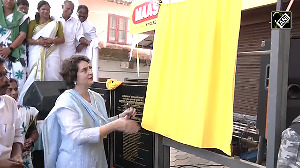Numbers could be classified further into (140) marketing and (160 or 161) for service calls to easily identify the purpose of the call in the future.

Telecom Regulatory Authority of India (Trai) on Friday, June 14, 2024, said the new 160 number series will reduce spam and ensure customers do not miss out on important service and transactional calls.
In a meeting with the Reserve Bank of India, the Securities and Exchange Board of India (Sebi), the Insurance Regulatory and Development Authority (Irdai) and Pension Fund Regulatory and Development Authority (PFRDA) and more than 25 banks and other financial institutions on Friday, TRAI discussed the burgeoning problem of spam and ways to tackle it, officials said.
So far, numbers in the 140 series have been allocated for all commercial purposes. These could be classified further into (140) marketing and (160 or 161) for service calls to easily identify the purpose of the call in the future.
In the first stage, it has been earmarked for all entities regulated by the RBI and regulators like Sebi, Irdai and PFRDA.
'Once it is implemented, it shall help in the easy identification of the calling entity and will prevent the duping of innocent citizens by fraudsters,' Trai said.
It was also discussed that the operation of the 140 series, at present being used for promotional purposes, is being migrated to the DLT platform and scrubbing of digital consent is also being operationalised.
'With the implementation of the above two measures, substantial control on spam calls from 10-digit numbers is expected,' Trai said.
Representatives of public and private sector banks, members of the Association of National Exchanges Members of India (ANMI) and all the telecom service providers were present at the meeting.
DCA push
The Digital Consent Facility (DCA) established by telecom service providers was also discussed in detail at the meeting, Trai said.
The DCA facility enables the acquisition of digital consent of the customer and further enables senders such as banks, insurance companies, and other entities to send promotional communications over SMS and voice to customers irrespective of their DND status.
A unified platform to seek, maintain, and revoke the consent given by customers towards receiving commercial communication from businesses, DCA was brought in to give consumers control over who can message them.
However, Trai has repeatedly flagged the slow pace exhibited by operators like Reliance Jio, Bharti Airtel, Vodafone Idea, and BSNL in onboarding private businesses onto the system.
But the operators have blamed the sluggish response from the industry.
'The role and obligations of senders such as banks, insurance companies, and other entities with respect to TRAI regulations were also deliberated and it was decided to whitelist URLs/Apks in the content templates, use a minimum number of headers and content templates, and take immediate action against the entity/telemarketer in case of misuse of senders credentials,' Trai said on Friday.
Till now, there had been no unified system for customers to provide or revoke consent. In the earlier system, customer consent was obtained and maintained by businesses.
The problem often starts when these businesses purchase bulk short messaging services (SMS) from a telemarketer to send SMS texts to their clients and customers.
As a result, telecom service providers such as Access Providers (APs) could not check the veracity of consent.
No Charges For Multiple SIMs

Trai has not proposed introducing fees for mobile and landline numbers to ensure the efficient allocation and use of these finite resources, the regulator clarified on Friday, June 14, 2024.
The regulator quelled speculations that it intends to impose charges on customers for holding multiple SIMs or numbering resources.
Aiming to create a sustainable pool of new phone numbers for the country's nearly 1.2 billion and rising mobile phone connections, Trai last week issued a consultation paper on revising the National Numbering Plan.
With a tele-density of 85.69 per cent as of March 31, 2024, it expects the current total of 1,199.28 million telephone subscribers to continue rising.
In 2003, the Department of Telecommunications (DoT) conducted a comprehensive review and revision of the national number plan to accommodate the rapid increase in subscribers.
Subsequently, the National Numbering Plan 2003 was designed to allocate numbering resources for 750 million telephone connections across the country.
The plan aims to assess all factors affecting the allocation and utilisation of TI resources and proposes potential modifications to enhance the allocation policies and utilisation procedures, ensuring an adequate reservoir of TI resources.
In the same consultation paper, Trai highlighted the global practice of charging for Telecommunication Identifier (TI) numbers by the governments, and pointed out the Telecom Act, 2013 gives the Centre power to allot TI after imposing charges.
It had argued that imposing charges is one way of 'ensuring judicious and efficient use of any finite public resource'.
'The ownership of the numbering space resides with the government, granting service providers usage rights over the designated number resource during the tenure of their licenses.
'It is evident that numbers represent an exceedingly valuable public resource which is not infinite,' it had said.
The allocation of numbering resources in some of the countries worldwide is done on a chargeable basis, covering various categories such as mobile numbering resources, vanity numbers, and numbers for national interest, it had said.
However, Trai has taken a different stance since then. 'Trai has consistently been advocative of minimum regulatory intervention promoting forbearance and the self-regulation of market forces,' it added.
Feature Presentation: Ashish Narsale/Rediff.com












 © 2025
© 2025